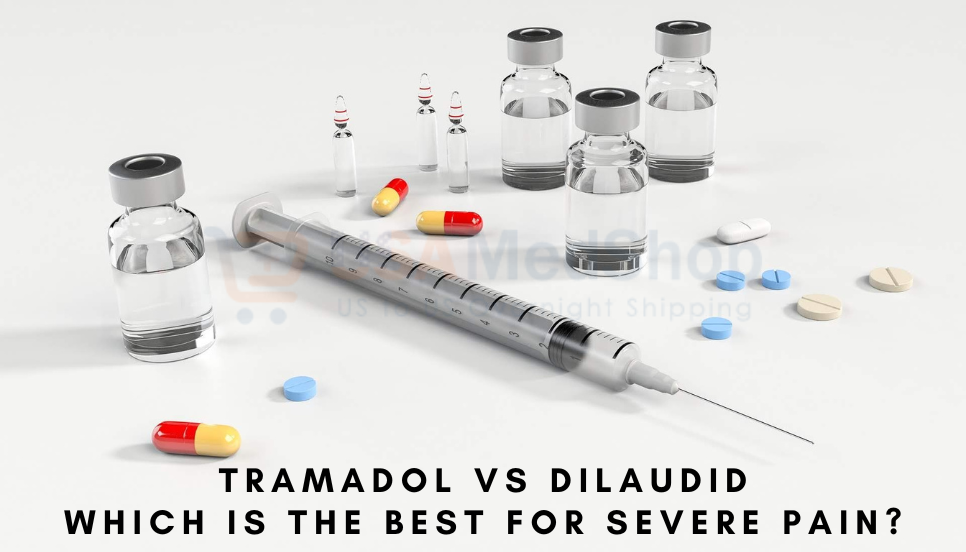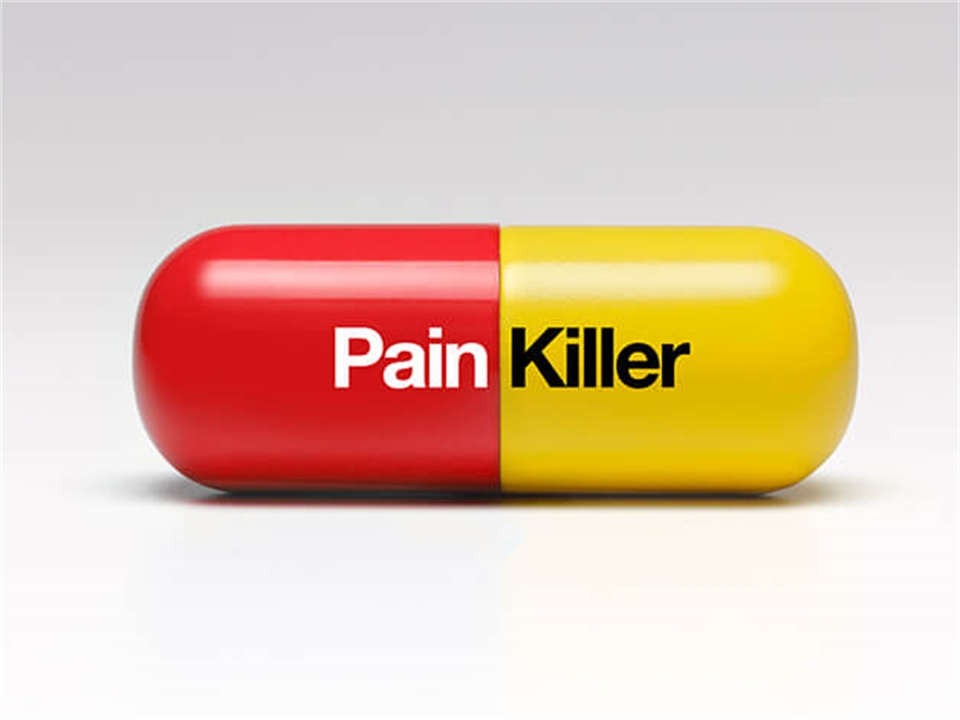
What is the strongest pain killer?
Tramadol is a synthetic opioid typically used for moderate to severe pain relief. It works by binding to the brain’s opioid receptors, which helps block pain signals sent to the brain. Tramadol can also cause drowsiness and dizziness, so it is not recommended for use when operating heavy machinery or driving.
Dilaudid is also an opioid medication, but it is more potent than Tramadol. Dilaudid is typically only used for short-term pain relief due to its high risk for addiction and abuse potential. It works similarly to Tramadol by binding to the brain’s opioid receptors, but it is much more potent and can cause serious side effects like slowed breathing and sedation.

So, which one is the most potent painkiller? That depends on each case and what type of pain relief they are looking for. In general, however, Dilaudid would be considered the stronger of the two drugs since it has a more potent effect on the brain’s opioid receptors.
Are Tramadol and Dilaudid the same?

Since both Tramadol and Dilaudid are opioids, they work similarly. They entangle opioid receptors in the brain and spinal cord, which changes how pain signals are sent and received. But these two drugs are not the same in some important ways.
Tramadol is a synthetic opioid typically used to treat moderate to severe pain. It is also available as an over-the-counter medication in some countries. On the other hand, Dilaudid is a more potent opioid only available by prescription. It is often used to treat severe pain or when other pain drugs are ineffective.
Both Tramadol and Dilaudid can cause side effects. However, Dilaudid may cause more severe side effects like slowed breathing or death if taken in large doses or other substances that depress the respiratory system.
Does Tramadol interact with Dilaudid?
Tramadol is a medication that is commonly used to treat pain. It is an opioid medication, which means that it has the potential to interact with other medications that are also opioids. One such medication is Dilaudid (hydromorphone). Dilaudid is also an opioid medication, and it can potentially interact with Tramadol.
If you were taking Tramadol and prescribed Dilaudid, it is essential to be aware of the potential for interaction between the two medications. Tramadol and Dilaudid can cause drowsiness and dizziness, so taking them together can amplify these effects. Taking these medications together can also increase the risk of developing constipation. If you take Tramadol and Dilaudid together, it is essential to drink plenty of fluids and eat a high-fiber diet to help prevent constipation.
It is also essential to be aware that taking Tramadol and Dilaudid together can increase the risk of overdose. Both medications can depress breathing, and bringing them together can magnify this effect. If you take Tramadol and Dilaudid together, it is essential to be aware of the signs of overdose; it is critical to seek medical help immediately.
Best pain medication for severe pain?
There are many different pain medications available, and the best one for severe pain may vary depending on the person. Some standard options include opioids, NSAIDs, and corticosteroids. Opioids are typically used for short-term pain relief, while NSAIDs and corticosteroids may be used for short- and long-term pain relief.
Dilaudid and Tramadol are strong pain medications that can effectively treat severe pain. However, they work in different ways and have other side effects.
Dilaudid is an opioid medication that works by binding to the body’s natural pain-relieving receptors; this reduces pain perception and produces a sense of euphoria. Dilaudid is a short-acting medication, which means it wears off relatively quickly. It is typically taken every four to six hours for pain relief.
Tramadol is a synthetic opioid that works by inhibiting the reuptake of the neurotransmitter serotonin, increasing the level of serotonin in the brain, which reduces pain signals. Tramadol is a long-acting medication, which means it remains active in the body for several hours after being taken. It is typically taken every four to six hours for pain relief.
Common side effects of these pain pills?
The side effects of these drugs are very different from each other. For example, taking Tramadol for a long time can lead to severe withdrawal symptoms and insomnia. If you take it for a short period, it can lead to nausea and diarrhea. However, these side effects don’t affect the users as much as they do when they are taken for more extended periods.
There are many potential side effects of Tramadol and Dilaudid, as they are both powerful pain medications. Some of the more common side effects include:
- nausea
- dizziness
- headache
- constipation
- and drowsiness
More severe side effects can include:
- seizures
- slowed breathing
- and even cardiac arrest.
The Tramadol and Dilaudid interaction may lead to adverse effects such as drowsiness, nausea, and vomiting. Because of these potential risks, it is essential only to take these medications as directed by a doctor or other healthcare professional.
What other painkillers can you take with Tramadol?
A few other painkillers can be taken with Tramadol, but they may not be as effective as Tramadol. One of these is acetaminophen, commonly found in over-the-counter pain medications like Tylenol. Another is ibuprofen, a non-steroidal anti-inflammatory drug (NSAID) available over the counter. Finally, there is codeine, which is a narcotic painkiller that requires a prescription.
In general, it is best to avoid taking other painkillers with Tramadol. This is because the efficacy of Tramadol may be reduced when it is taken with other drugs. Additionally, the side effects of Tramadol may be increased when it is taken with other medications. If you must take another painkiller with Tramadol, speak to your doctor or pharmacist first.
Like other opioids, Dilaudid and Tramadol addiction can lead to drug abuse. The drugs are often prescribed for chronic pain, but they can also be abused for their euphoric effects. People who use these drugs may develop an addiction and need treatment to overcome it.
How to prevent overdose – Tramadol & Dilaudid?
An overdose occurs when a person takes a too high amount of Tramadol or Dilaudid than what they need. When this happens, the person will experience some health problems.
If you are taking Tramadol or Dilaudid for pain, be aware of the dangers of opioid overdose. Here are some tips to help prevent an accidental overdose:
- Avoid taking large doses of Tramadol or Dilaudid. Taking too much can lead to an opioid overdose.
- Never crush, chew or snort Tramadol or Dilaudid. This can lead to an overdose.
- Do not mix opioids with other drugs or alcohol. It is dangerous to do so because it may increase the risk of an opioid overdose.

When these medications are taken, people with Tramadol and Dilaudid allergies may experience symptoms. These symptoms can include hives, difficulty breathing, a rapid heart rate, and anaphylaxis. If you are allergic to Tramadol or Dilaudid, it is essential to talk to your doctor about the possibility of avoiding these medications.
Where can I buy severe pain pills?
If you’re looking to purchase severe pain pills such as Tramadol and Dilaudid, you may want to check out usamedshop.com. This online pharmacy is known for offering some of the most affordable prices on these medications, and they also provide a wide range of other medicinal products. Their customer service team is available 24/7 to help you get the medicine you need.
